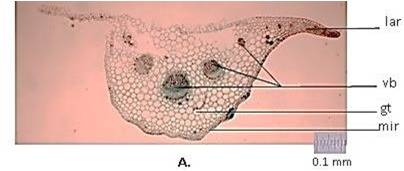Abstract
Quality and efficacy of botanical formulations are largely dependent on authenticity of raw materials used. Taraxacum officinale Weber (TO) and Launaea procumbens (Roxb.) Ramayya & Rajagopal (LP) are well known Indian traditional herbs used in a variety of herbal preparation for the treatment of a number of diseases. The morphological resemblance in leaves and flowers of both the species led to the problems of adulteration and ultimately affects the quality and efficacy of their products. The current investigation was aimed to provide the macro-microscopic and LCMS markers for identification and authentication of genuine plant materials of TO and LP. Morphologically, TO can be differentiated with bright yellow colored inflorescence arranged as solitary terminal capitulum on the un-branched peduncle, pappus hairs pale white and unequal, rhizomatous root with milky latex. While in LP, capitulum was arranged in lax corymbs on branched peduncle. Powder microscopy of TO revealed the presence of distinct schizogenous oil glands and laticifers which were absent in LP. Moreover, liquid chromatography-mass spectrometry analysis showed the presence of Quinic acid, Protocatechuic acid, Chlorogenic acid and Umbelliferone in both the plants with their quantitative variability, whereas Scopoletin showed distinguishing LCMS marker as it was present only in TO samples.
Full text article
Generated from XML file
Authors
Neha Sahu, Awantika Singh, Sayyada Khatoon, Brijesh Kumar, & Arya K.R. (2023). Macro-microscopic and LCMS markers for identification and authentication of herbal formulations of Taraxacum officinale and Launaea procumbens. International Journal of Research in Pharmaceutical Sciences, 8(3), 301–310. Retrieved from https://ijrps.com/home/article/view/4579
Copyright (c) 2017 International Journal of Research in Pharmaceutical Sciences

This work is licensed under a Creative Commons Attribution-NonCommercial-NoDerivatives 4.0 International License.

